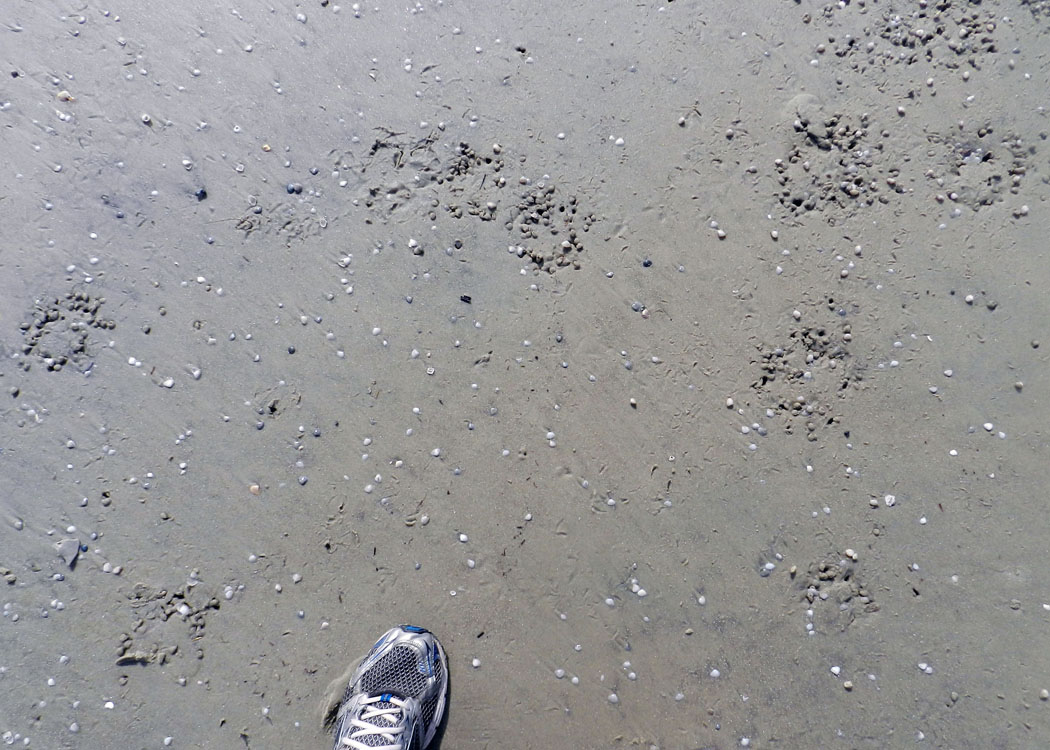For today’s entry in the holiday-and-ichnology inspired countdown of Georgia-coast traces, we will move from the maritime forest to the shoreline, where a trace made through the behavior of one species of molluscan – the knobbed whelk (Busycon carica) – influenced the behavior (and hence traces) of another molluscan – the dwarf surf clam (Mulinia lateralis).
These traces then attracted shorebirds, which added their tracks and beak probe marks to the molluscan traces. This is a excellent modern example of how the interaction of one species of animal with a sediment can affect the interactions of other species with that same sediment, leading to their creation of composites traces.
 See all of the knobbed whelks (Busycon carica) in this photo? I know, you don’t actually see their shells because they buried themselves, but you see their outlines on this sandy beach surface because of the many dwarf surf clams (Mulinia lateralis) that burrowed around them. Also look for all of the bird tracks and probe marks around the whelks. (Photograph by Anthony Martin, taken on Jekyll Island, Georgia.)
See all of the knobbed whelks (Busycon carica) in this photo? I know, you don’t actually see their shells because they buried themselves, but you see their outlines on this sandy beach surface because of the many dwarf surf clams (Mulinia lateralis) that burrowed around them. Also look for all of the bird tracks and probe marks around the whelks. (Photograph by Anthony Martin, taken on Jekyll Island, Georgia.)
I’ve already written about these composite traces and the ecological story they tell, so for those details, go to this link and this link. But the summary version goes like this:
- Low tide stranded the whelks and clams on the beach.
- Whelks used their muscular feet to pull themselves into the still-wet sand to avoid desiccation and predation.
- Clams took advantage of disturbed (liquified) sand around the whelks and buried themselves, also to avoid predation and desiccation.
- Shorebirds saw whelk-shaped concentrations of clams, chowed down on them.
The story gets more complicated in places, especially when seagulls decided they also wanted to eat the whelks, but that’s most of it. So next time you’re on a beach and you see a triangular-shaped concentration of small clams, take a second look to see whether there’s a live whelk underneath it: traces begetting traces.
Further Reading
Busycon carica: Knobbed Whelk. Smithsonian Marine Station at Fort Pierce.
Mulinia lateralis: Dwarf Surf Clam. Smithsonian Marine Station at Fort Pierce.
Links to Previous Posts in This Theme
On the 12th Day of Ichnology, My Island Gave to Me: 12 Snails Grazing
On the 11th Day of Ichnology, My Island Gave to Me: 11 Plovers Probing
On the 10th Day of Ichnology, My Island Gave to Me: 10 Beetles Boring
